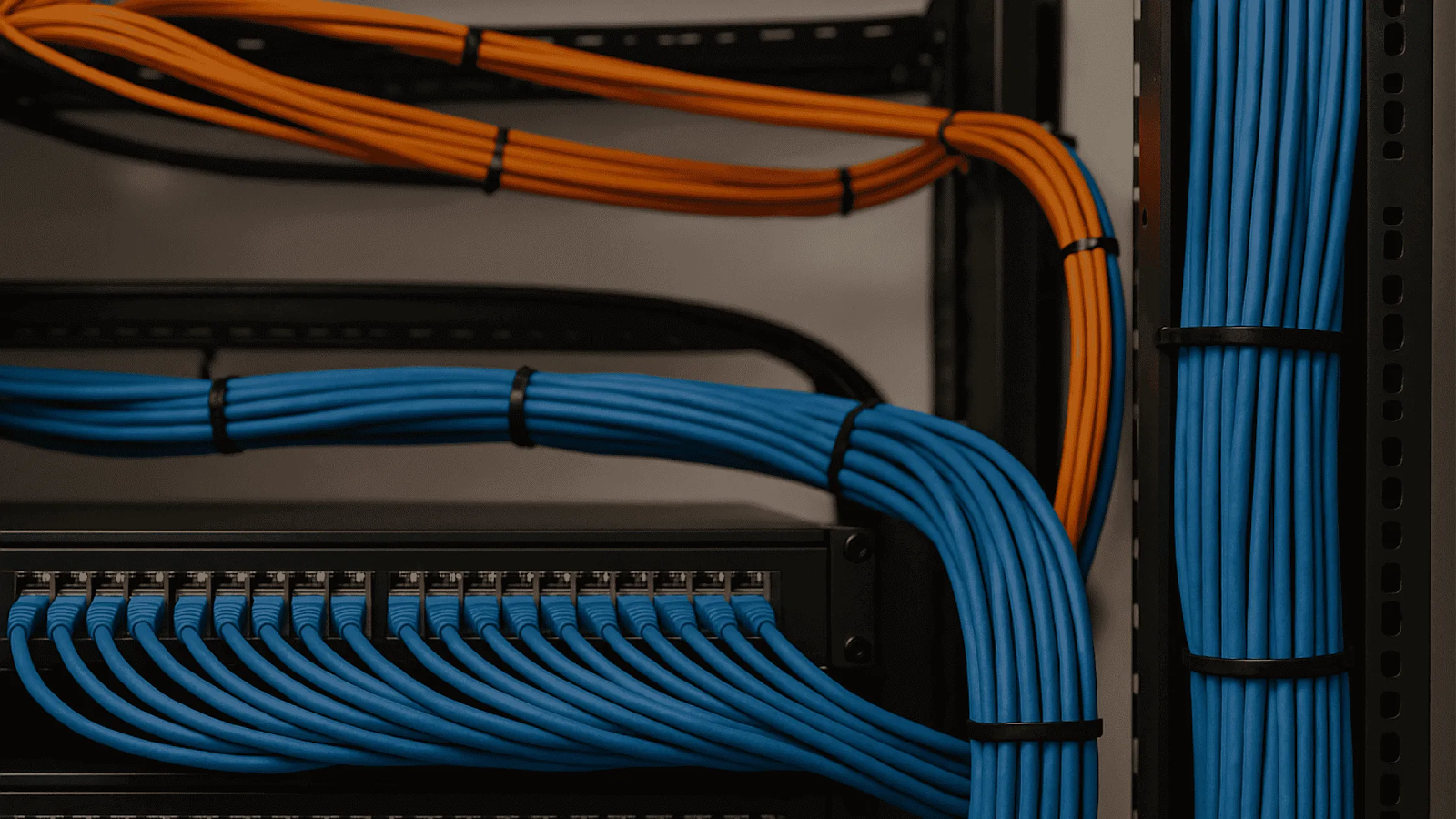Structured Cabling Explained: Six Zones That Drive Network Success
In the hyper-connected world, businesses run smoothly and strongly on the network they run on. Behind every high-performing network is have silent backbone cabling: Structured Cabling. This is a secure and reliable IT infrastructure that is easy to manage, strategically organized, and built for growth.
But what sets apart the successful structured cabling system? It has six critical zones that drive network success. The structured cabling contractors design the network layout planning, which is important for the network system. From backbone cabling, which links the core system to low-voltage wiring power up the connectivity.
In this blog, explore what structured cabling is, the 6 zones that drive network success, best practices, and much more.
Table of Contents
Introduction
What is Structured Cabling?
6 Zones that drive Network Success
Role of a Structured Cabling Company
Best Practices for Structured Cabling Installation Services
Conclusion
What is Structured Cabling?
Structured Cabling Dallas is a standardized approach to setting up the structured cabling infrastructure in buildings. Structured cabling company designed to support hardware use and is organized into 6 subsystems, such as equipment room, backbone cabling, entrance facilities, telecommunication room, horizontal cabling, and much more.
A structured cabling company ensures all the telecommunication wiring is assembled systematically, which makes it easier to upgrade and maintain. There are components of cabling, such as twisted pair cabling, Cat 5 and Cat 6, and fiber optic cable. It also improves network performance, cost efficiency, scalability, flexibility, and much more.
6 Zones that drive Network Success
Structured cabling is the silent backbone cabling for a successful IT network. The well-structured cabling system ensures reliable, fast, and scalable network communications in an t b,№ɓorganization.
Here are the six different zones that help to drive the network's success in structured cabling installation services.
Entrance Facility (EF)
The entrance facilities are important as they indicate the telecommunication services that enter the premises through the opening of the wall. The structured cabling service provider or local area network will be routed through the conduit and connected to the device in the building or room premises.
Equipment Room (ER)
The equipment room is the central hub of the structured cabling system, which contains a cross-connect in the subsystem coverage. The room contains servers, switches, routers, and telecommunication equipment, which enhance business operations. They are designed with scalability and flexibility so that as the business grows, equipment rooms are capable of storing the new hardware.
Telecommunication Room (TR)
The telecommunication rooms are divided into buildings and servers as connection points between backbone cabling and horizontal cabling. These rooms contain termination panels, patch panels, and other equipment that may hamper the signal to individual workstations.
Backbone Cabling (BC)
The structured cabling contractors offer backbone cabling or vertical cabling, which helps to run the cables between the equipment room, the entrance facility, and the telecommunication rooms. These cables have high bandwidth and capacity to handle a large amount of data transmission over a long distance.
Horizontal Cabling (HC)
Horizontal cabling connects cables that are connected from telecommunication to work areas. The cables typically are fiber optic cable and copper cable, which are designed to handle all the requirements that connect devices like phones, laptops, and printers. When choosing horizontal cabling, it's important they consider applications and devices that are used in the network for high bandwidth.
Work Area (WA)
The Work Area is the final point in the structured cabling system as it connects the end-user devices to the network. It contains patch cords, outlets, and converters or adapters. The well-structured work areas offer flexibility, scalability, and ease of use. The structured cabling company labels and documentation the work area component, which offers troubleshooting and maintenance.
Role of a Structured Cabling Company
The structured cabling company plays an important role as it has an impact on business operations and installs the cabling systems. They have expertise in structured cabling installation services and cabling systems, which ensures the cabling network meets the specific needs of the building and occupants globally.
The structured cabling contractors help to select the quality materials and layouts, and oversee the installation process, which guarantees an efficient and robust system. To know industry standards, i.e., ANSI/TIA-568 standard, ensures that a structured network system is scalable, reliable, and supports future technological advancement.
Best Practices for Structured Cabling Installation Services
The following are the best practices to be followed for Structured Cabling Installation services.
Planning and Design
Structured cabling contractors must evaluate the current and future network needs, like bandwidth requirements, device connectivity, and potential scalability plans. Network layout planning helps to map out the floor plan, server, marking workstation, and equipment location to visualize the cable routes. Choose the right cable type based on the application and requirements.
Installation and Organization
Route the cables efficiently through walls and floors that protect them from damage and interference. The structured cabling contractors must use the cable management solutions, such as racks, cable trays, etc., that make the cables accessible, organized, and prevent clutter. Label all the cables and components for easy troubleshooting and identification.
Testing and Verification
Structured cabling contractors help to test the cable integrity and performance, which meet the industry standards, before full deployment. Verify the signal strength and data transmission capabilities. Also, ensure to meet the compliance with industry standards such as TIA/ANSI/EIA.
Documentation and Maintenance
The structured cabling company maintains detailed records of cable routes, terminations for future reference. Having regular inspections ensures long-term network efficiency and identifies potential issues early. Lastly, the contractors use documented layout and labelling for troubleshooting and maintenance.
Conclusion
In the world of cables and wiring, structured cabling is made of 6 main components, which are crucial for business operations. These components are important pieces in installing the structured cabling system. The structured cabling company helps to connect multiple devices and flow network and data smoothly across multiple devices.




Comments
Post a Comment